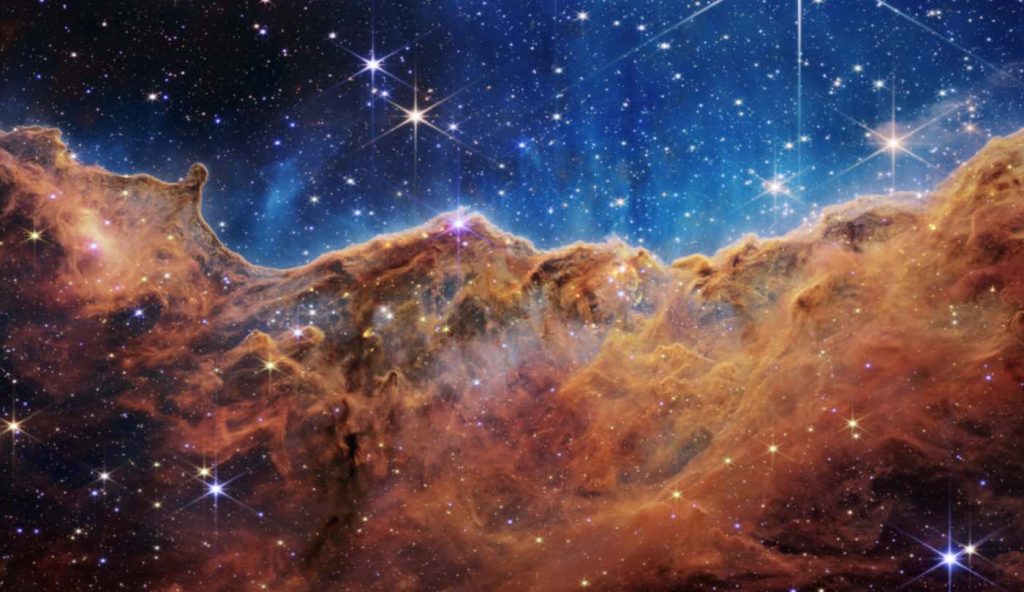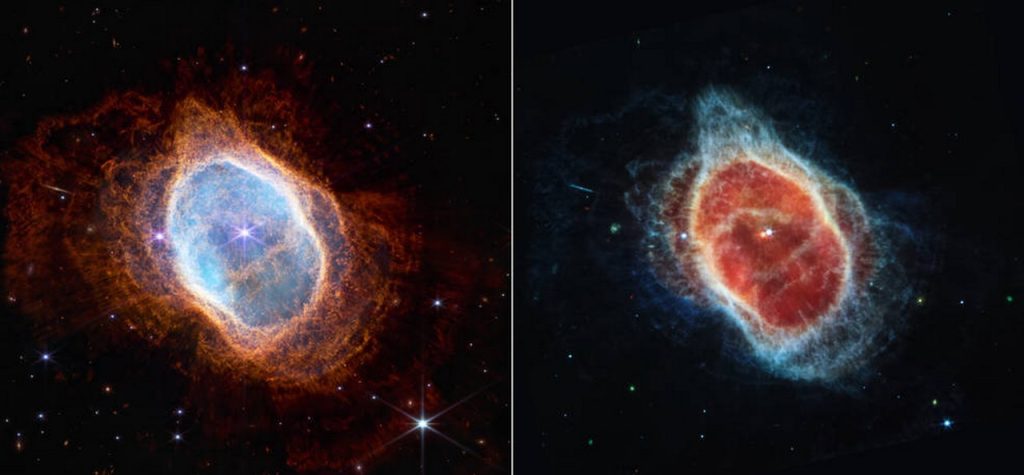
The dawn of a new era in astronomy is here as the world gets its first look at the full capabilities of NASA’s James Webb Space Telescope.
The full set of the telescope’s first full-color images and spectroscopic data, which uncover a collection of cosmic features elusive until now, released Tuesday to an eager and adoring public, some of whom have waited thirty years to see them.
“Today, we present humanity with a groundbreaking new view of the cosmos from the James Webb Space Telescope – a view the world has never seen before,” said NASA Administrator Bill Nelson.
“These images, including the deepest infrared view of our universe that has ever been taken, show us how Webb will help to uncover the answers to questions we don’t even yet know to ask; questions that will help us better understand our universe and humanity’s place within it.”
Infrared vision, something the Hubble Space Telescope can’t do, is necessary to see the earliest, i.e. farthest away scenes of the universe.
CHECK OUT: Hubble Telescope Spots Most Distant Star Ever Seen on Record, From 12 Billion Light Years Away
“The Webb team’s incredible success is a reflection of what NASA does best. We take dreams and turn them into reality for the benefit of humanity. I can’t wait to see the discoveries that we uncover—the team is just getting started!”
Indeed Webb is already booked for more than 6,000 hours of research time across dozens of different projects by various astronomers to look at everything from “high red-shift quasars,” to exoplanets, to asteroids in our own solar system.

Webb’s first observations tell the story of the hidden universe through every phase of cosmic history—from neighboring planets outside our solar system, known as exoplanets, to the most distant observable galaxies in the early universe.
“It took decades of drive and perseverance to get us here, and I am immensely proud of the Webb team,” said Thomas Zurbuchen, associate administrator for NASA’s Science Mission Directorate. “These first images show us how much we can accomplish when we come together behind a shared goal, to solve the cosmic mysteries that connect us all. It’s a stunning glimpse of the insights yet to come.”
LOOK: Glimpse of God? The Hubble Telescope’s 12 Best Photos on the 30th Anniversary of its Launch into Orbit
Webb’s first observations were selected by a group of representatives from NASA, the European Space Agency, the Canadian Space Agency, and the Space Telescope Science Institute. They reveal the capabilities of all four of Webb’s state-of-the-art scientific instruments.
- SMACS 0723: Webb has delivered the deepest and sharpest infrared image of the distant universe so far—and in only 12.5 hours. For a person standing on Earth looking up, the field of view for this new image, a color composite of multiple exposures each about two hours long, is approximately the size of a grain of sand held at arm’s length. This deep field uses a lensing galaxy cluster to find some of the most distant galaxies ever detected. This image only scratches the surface of Webb’s capabilities in studying deep fields and tracing galaxies back to the beginning of cosmic time.
- WASP-96b (spectrum): Webb’s detailed observation of this hot, puffy planet outside our solar system reveals the clear signature of water, along with evidence of haze and clouds that previous studies of this planet did not detect. With Webb’s first detection of water in the atmosphere of an exoplanet, it will now set out to study hundreds of other systems to understand what other planetary atmospheres are made of.
- Southern Ring Nebula: This planetary nebula, an expanding cloud of gas that surrounds a dying star, is approximately 2,000 light years away. Here, Webb’s powerful infrared eyes bring a second dying star into full view for the first time. From birth to death as a planetary nebula, Webb can explore the expelling shells of dust and gas of aging stars that may one day become a new star or planet.
- Stephan’s Quintet: Webb’s view of this compact group of galaxies, located in the constellation Pegasus, pierced through the shroud of dust surrounding the center of one galaxy, to reveal the velocity and composition of the gas near its supermassive black hole. Now, scientists can get a rare look, in unprecedented detail, at how interacting galaxies are triggering star formation in each other and how the gas in these galaxies is being disturbed.
- Carina Nebula: Webb’s look at the ‘Cosmic Cliffs’ in the Carina Nebula unveils the earliest, rapid phases of star formation that were previously hidden. Looking at this star-forming region in the southern constellation Carina, as well as others like it, Webb can see newly forming stars and study the gas and dust that made them.
WATCH Zurbuchen’s emotional explanation from Reuters…
RING In The New Era Of Space Exploration On Social Media…
Credit: Source link



